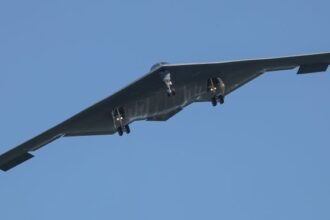The escalating tensions across the Middle East have sent ripples far beyond regional borders, creating a perfect storm for the global aviation industry already navigating post-pandemic recovery. Major carriers are now facing operational nightmares as conflict zones expand, forcing expensive and time-consuming flight path alterations that threaten to upend the delicate balance sheet of international air travel.
“We’re witnessing unprecedented disruption to established air corridors,” explains aviation analyst Morgan Chen. “Airlines are implementing contingency routing that adds anywhere from 40 minutes to three hours on critical intercontinental routes connecting Europe and Asia.”
The financial implications have been swift and severe. Leading international carriers including Emirates, Qatar Airways, and Lufthansa report fuel consumption increases of up to 15% on rerouted flights, directly impacting their operational costs during a period when fuel prices have already risen by 22% since January. This translates to approximately $8,000-12,000 in additional expenses per long-haul flight, according to industry estimates from the International Air Transport Association (IATA).
Beyond the immediate economic impact, the crisis introduces complex logistical challenges for airlines. Flight crews face extended duty hours, potentially triggering regulatory rest requirements that cascade into scheduling complications. Maintenance cycles require adjustment, and passenger connections at hub airports become increasingly difficult to maintain.
The crisis has hit Middle Eastern carriers particularly hard. UAE-based airlines, which built their business models on serving as efficient connectors between continents, now struggle with the fundamental premise of their operations. Recent data from FlightRadar24 shows a 23% decrease in flights operating through traditional Middle Eastern corridors compared to the same period last year.
“What we’re experiencing is not simply a temporary disruption,” notes Dr. Fatima Al-Mansoori, transportation economist at the University of Toronto. “The aviation industry faces structural challenges that may reshape global connectivity patterns if the conflict continues long-term.”
For Canadian travelers, the impact manifests primarily through longer flight times and higher ticket prices on routes to Asia and parts of Africa. Air Canada has already implemented surcharges on select international routes, with economy fares to destinations like Mumbai and Singapore increasing by approximately $80-150 per ticket.
Insurance complications add another layer of complexity. Aviation insurers have reassessed risk premiums for carriers operating near conflict zones, with some policies excluding coverage for specific airspace altogether. This forces airlines to either accept increased premium costs or abandon certain routes entirely.
The disruption extends beyond passenger travel into the air cargo sector, which faces similar rerouting challenges but with even tighter delivery deadlines. Time-sensitive shipments of pharmaceuticals, perishable goods, and manufacturing components now require complex logistical reconfigurations, affecting global supply chains that depend on predictable air freight schedules.
Industry experts predict that if the conflict continues through the year, the collective cost to the global aviation industry could exceed $4.7 billion in 2025 alone, potentially triggering a consolidation phase among carriers with weaker financial positions.
As the world watches this unfolding crisis, the question remains: will these disruptions accelerate the development of alternative air corridors and hub locations, permanently altering the geography of global air travel, or can the industry weather another storm while maintaining the interconnected world we’ve come to expect?


















